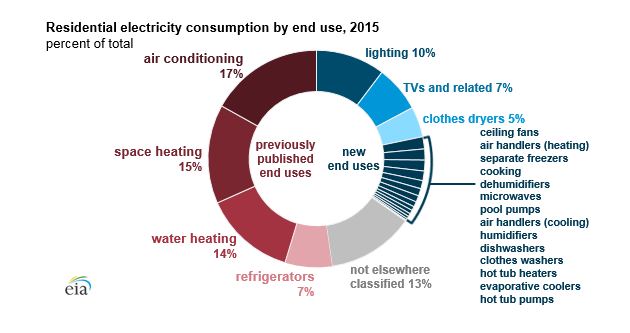Here at TDS, we’re big fans of technology and gadgets—but we don’t love that they can be energy vampires.
Energy vampires are appliances or tech that continue to draw electrical power, even when they’re not being used. These power-sucking devices can be a hidden cause of higher energy bills. Even if it’s just a little power at a time, it adds up to big numbers—like up to a quarter of your electrical bill.
The Natural Resources Defense Council says that this power drain costs each American household about $165—or $19 billion nationally. If that doesn’t sound like much out of your own pocket, consider that in six years you will have spent an extra $1,000 on energy you didn’t even know about.
And then there’s the environmental impact. Reducing this passive energy use could prevent 44 million metric tons of carbon dioxide pollution (or 4.6 percent of U.S residential carbon dioxide emissions from electricity).
So what can to prevent the drain on the planet and your wallet? Here’s a list of simple and practical things you can do to put a stake through the heart of any energy vampire:
- Ditch the bricks.
 Devices with cord that have large, black blocks that plug (aka “bricks”) into the wall outlet are frequently vampires. These are often found on cell phone and laptop chargers, video game consoles, coffee makers, DVD players—and pretty much any technology with standby lights or clocks. If you’re not using the device often (check your spare room, if you have one!), unplug it and save some dough.
Devices with cord that have large, black blocks that plug (aka “bricks”) into the wall outlet are frequently vampires. These are often found on cell phone and laptop chargers, video game consoles, coffee makers, DVD players—and pretty much any technology with standby lights or clocks. If you’re not using the device often (check your spare room, if you have one!), unplug it and save some dough. - Let yourself go. You’ve never had a better reason to skip drying your hair or shaving. The Consumer Energy Alliance says that one of the least suspecting energy vampires is your hair dryer. Curling irons and electric shavers are also top energy users. If you still use them, just unplug them when you’re done (or read the next tip).
- Be lazy—use power strips. Unplugging multiple devices can be a pain, but power strips make it easy. Whether you have the strip tied to a wall switch, or just reach over and turn the strip off by hand, its only one, easy, step. Even better, did you know there are timed power strips? You can set anything connected it to be “on” at a certain time and automatically turn off later.
- Give monitors and computers a rest. Georgetown University says a turned-off computer uses 65% less energy than one left on or in idle. At the very least, utilize sleep modes to minimize energy drain. Also, don’t forget your printers and scanners—turn them off and/or these co
- Hunt for new vampires. Find out which devices are energy vampires with a portable energy meter. They can measure electricity usage and operating costs for anything plugged into an outlet, from lamps to refrigerators. Many libraries have them available to borrow for free thanks to local utility company donations. Try searching “portable energy meter” in your library’s online catalog or give them a call.
- Choose wisely. Home appliances like refrigerators, microwaves, ovens, dishwasher, freezers, dehumidifiers, and space-heaters can consume a lot of energy—and also aren’t easily unplugged. Next time you need a new one, look for Energy Star labels. Those labels tell you how much it’ll cost to use that appliance once you bring it home. Hot tip: the Energy Star website has information on rebates and tax credits available for certain energy-efficient products.



